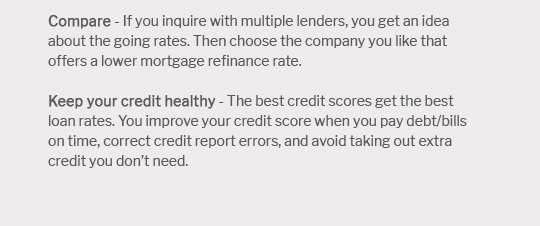 |
|||
 |
 |
 |
||
|---|---|---|
 |
||
 |
||
 |
||
 |
||
 |
||
 |
||
 |
 |
 |
 |
Understanding Home Refinance Loan in Texas: Benefits and ConsiderationsRefinancing your home in Texas can be a strategic financial decision. By replacing your existing mortgage with a new loan, you can potentially secure a lower interest rate, reduce monthly payments, or even cash out some of your home's equity. This guide explores the key aspects of home refinance loans in Texas. Why Consider Refinancing?Lower Interest Rates: One of the primary reasons homeowners consider refinancing is to take advantage of lower interest rates, which can significantly reduce the cost of your mortgage over time. Improved Loan Terms: Refinancing allows you to change the terms of your mortgage, such as moving from an adjustable-rate mortgage to a fixed-rate mortgage for more predictable payments.
Steps to Refinance Your HomeEvaluate Your Financial GoalsBefore starting the refinance process, clearly define what you want to achieve. Whether it's lowering your monthly payment or accessing equity, knowing your goals is crucial. Check Your Credit ScoreYour credit score will impact the interest rates and terms you qualify for. Make sure your score is in good shape before applying for a refinance loan. Use an Online Mortgage CalculatorUse an online mortgage calculator to estimate potential savings and costs associated with refinancing. Types of Refinance LoansRate-and-Term RefinanceThis type of refinance changes the interest rate, the term, or both, without altering the loan amount. Cash-Out RefinanceA cash-out refinance allows you to borrow more than you owe on your current mortgage and pocket the difference. Learn more about what is a cash out refinance to see if it suits your needs. Potential Risks and ConsiderationsWhile refinancing can offer benefits, it also comes with costs and risks. Consider the following:
Frequently Asked QuestionsWhat are the typical closing costs for refinancing in Texas?Closing costs typically range from 2% to 5% of the loan amount, covering fees for appraisal, title insurance, and other administrative processes. How long does the refinancing process take?The refinancing process can take anywhere from 30 to 45 days, depending on the lender's efficiency and the borrower's responsiveness. Can I refinance if my home value has decreased?Yes, but it might be more challenging. Some programs like HARP (Home Affordable Refinance Program) are designed to help homeowners in this situation. In conclusion, refinancing your home in Texas can offer significant financial benefits, but it requires careful consideration of your financial situation and goals. Make sure to evaluate all options and consult with financial advisors to make an informed decision. https://www.gtfcu.org/greater-texas-cu/loans/personal/mortgage-refinance
Refinancing is available for all types of mortgages - conventional, FHA loans, adjustable-rate and fixed-rate. It's a very easy process and involves less time ... https://www.cutx.org/mortgage-loans/refinance
Texas law says that your cash-out mortgage refinance must be limited to 80% LTV (loan-to-value). That means if your mortgage balance is 60% of your home value ... https://www.sentemortgage.com/mortgage-refinancing/
The most common way to lower your monthly payment is to refinance a mortgage loan in Texas with a lower interest rate and/or refinance with a longer-term loan.
|
|---|